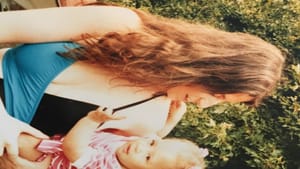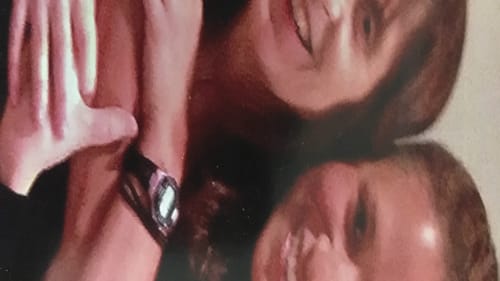Stay in the Loop
BSR publishes on a weekly schedule, with an email newsletter every Wednesday and Thursday morning. There’s no paywall, and subscribing is always free.
Loving my biracial identity
How being both Black and white helped me embrace all aspects of myself

I grew up the biracial daughter of a white single mother in a town with very little racial or ethnic diversity in the early 1980s. In honor of Black History Month and Valentine’s Day, I’m sharing my experiences as a person who has used difference as a doorway, rather than a wall.
An unpopular opinion
In my hometown, nobody was validating nonbinary identities and experiences. Everyone I knew who was of a mixed-race background identified with their marginalized race to the exclusion of all others. I had several friends with one white and one Black parent tell me they were Black, and even voice their hatred of white people.
“But your mom is white,” I’d say. “You’re part white. Do you hate part of yourself?”
Mine was an unpopular opinion, one I learned from my mother, who never cared about succumbing to societal pressures. When I was growing up (and even now), my mother’s ideas would’ve been considered at best nonconformist and at worst antagonistic. She was a white woman who fell in love with a Black man, and didn’t care about stigmas regarding interracial couples. She got pregnant when they were dating, and even though they broke up long before I was born, she decided—impervious to the opinions of others—to raise me on her own. My mother taught me to be fiercely independent, unwaveringly honest, and unapologetically myself. She also taught me to be proud of my heritage.
Fighting the one-drop rule
She joined a group for interracial parents and their mixed-race children, took me to Black-owned hair salons, befriended people of all backgrounds, and joined a POC-owned-and-operated organization dedicated to promoting representation of marginalized identities in literature. With her steadfast insistence on telling me the truth, her willingness not to give in to the pressures and expectations of contemporary culture, she told me I was both Black and white and that I should self-identify as such. Other parents of biracial children and many of her friends (and probably even some family members) told her the world would see me as Black, the implication being that I should base my understanding of my race on the perspectives of others.
By refusing to succumb to the majority point of view on race, a point of view that was codified into popular culture as a direct result of the racist ideology of the one-drop rule, my mother gave me the gift of self-love. One of the things I’ve come to realize about love is that it is only truly love if it’s inclusive of all aspects of a person’s identity. I can’t say, “I’ll love myself when I lose 10 pounds” or “I’ll love you if you change this or that aspect of yourself.” Love is unconditional and encompasses the whole person.

Loving conditions
I can’t say I have loved myself my whole life. I haven’t. At some point in adolescence, I started placing conditions and contingencies on myself, as opposed to knowing my intrinsic value. Then, in my mid-20s, I made the decision to radically and unapologetically love myself. All of myself. Luckily, I had race as a reference point. In that area, I’d always comfortably existed in the rainbow of colors between Black and white. I honor and appreciate the rich tradition of African American storytelling, music, cuisine, and the resilience of a people who fought through oppression and demonstrated the beauty of the human spirit. At the same time, I also honor and appreciate the culture and cuisine of my white ancestors.
I don’t remember the first time I heard someone say “love may be a feeling, but it’s also a choice.” I do know that, when it comes to race, those words resonate very deeply with me. Embracing the full spectrum of my ethnic and racial identities has meant refusing to participate in a set of power dynamics that create racial binaries, hatred, and discrimination. Instead, I choose and have always chosen to unconditionally and unapologetically embrace all of my racial identity. For a long time, I was less self-accepting when it came to other things, like my body weight or shape or other areas where I felt pressure to be different than I was and conform to societal standards.
When I decided to choose self-love in every area of my life, I committed to no longer trying to change my gangly arms or the circumference of my thighs, to being okay with my poor sense of direction and the ups and downs of my emotions. I got comfortable existing in the spectrum between extremes.
More comfort, less hate
I don’t pretend to understand what other people need in terms of love or racial identification, but my personal experience has taught me that appreciating all of me has opened the door wide to a life that is filled with amazing and varied opportunities and experiences. I have a great, unwavering hope that more people will allow themselves to embrace a more inclusive, less binary understanding of race. It seems to me that, if we could all get more comfortable with Blackness and whiteness, we’d be able to move past so much hatred of ourselves and others, and move forward in love, inclusion, and unity.
Sign up for our newsletter
All of the week's new articles, all in one place. Sign up for the free weekly BSR newsletters, and don't miss a conversation.
